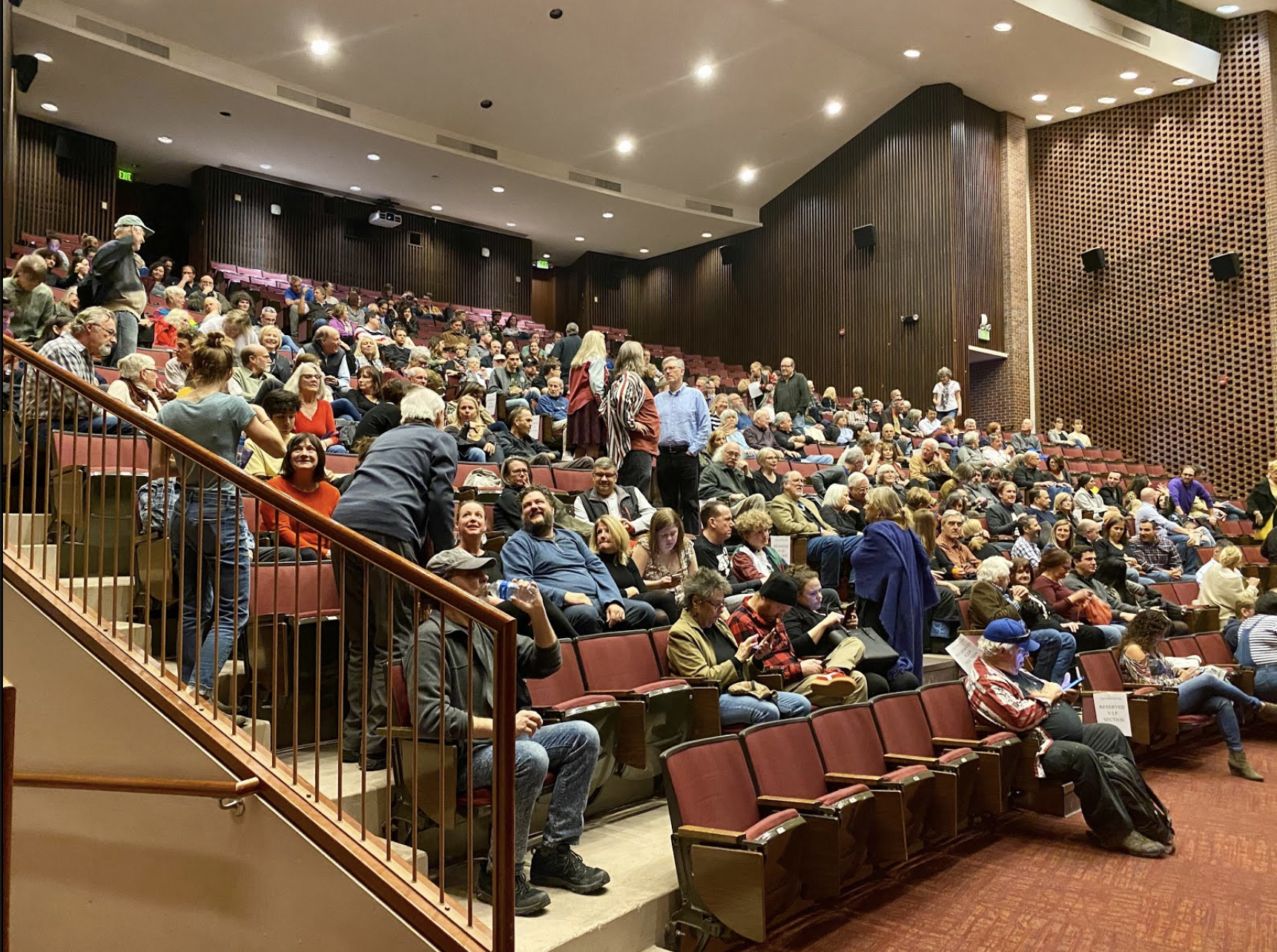
The University of Denver Premiere: The Tale of the Dog
The University of Denver Premiere: The Tale of the Dog
by Lisa Wheeler, Sunday, February 23, 2020
So last night I was honored to be invited to the exclusive premiere showing of Tale of the Dog – The Untold Story of Denver’s Greatest Rock Club, a fantastic documentary on the history of Denver’s short-lived Family Dog concert venue.
A who’s who of 1960s-1970s Denver music was in attendance – Harry Tuft, the founder of the Denver Folklore Center, Colorado Music Hall of Fame inductee Otis Taylor, New World Blues Dictionary drummer James (Denny) Townsend, Eighth Penny Matter’s Brent Warren, Lothar and the Hand People’s Paul Conly, as well as Mike Stelk, whose tireless efforts to preserve Colorado music history helped inspire the film.
The Tale of the Dog is a long-overdue movie on The Family Dog, the “pioneering hippie rock club,” which was only in business from Sept. 8, 1967, through July 19, 1968. The club made a huge mark on the early Denver rock scene, hosting the Grateful Dead, the Doors, Cream, Big Brother and the Holding Company, Jefferson Airplane, and Canned Heat, whose famous run-in with the Denver police department is well documented in the film.
The brainchild of Dan Obarski and University of Denver art professor Scott Montgomery, The Tale of the Dog spends an equal amount of time spotlighting the visual representation of the nightclub, both with its promotional posters (created by Stanley Mouse, Alton Kelley, Rick Griffin, Michael Ferguson, George Hunter, and Robert Fried), and its multimedia light shows, by Diogenes Lantern Works.
“My training is as a medievalist,” said filmmaker Scott Montgomery. “I got involved in this because I think it’s significant art, and it seemed to be under acknowledged. It’s not that far off from what I do, in medieval art. I still look at the iconography, the style… so I don’t think I’ve changed my field, but I just embraced a movement of art that I think is under acknowledged, and I think is one of the more significant art movements of the second half of the 20th century.”
“I didn’t know anything about this place,” said filmmaker Dan Obarski. “It wasn’t until I was in my 30s, I saw a picture of Jim Morrison playing at DU, and about fell out of my chair. I went searching for this Family Dog thing, and found this one website, that a guy named Mike Stelk had – it was the only website with the only piece of information out there, on the Family Dog. It listed all of the concerts. Nobody knew this. It was completely unknown. Then I saw Scott at a poster show, and he was the only other guy who knew anything about it. And we both thought it was important, and we needed to tell this story.”
Sorry, the comment form is closed at this time.